Types of bass fishing reels
There are a few types of bass fishing reels to choose from when you want to pair up with your fishing rod or when looking for a rod and reel combo. We can group them into 3 main types, which are Baitcast reels, spinning reels and spincast reels. And within those different types there are many variations, models and options that make them unique.
There are some advantages and disadvantages to each type of bass fishing reel.
The key to selecting the best reel for bass fishing is to first understand how each one works and performs with the style of fishing you plan on doing.
We are going to break down both the spinning and baitcasting reel in detail and we’ll even go over the spincast reel with pros and cons of all of them. And hopefully you will come away with a better idea of what will work for you and your fishing style.
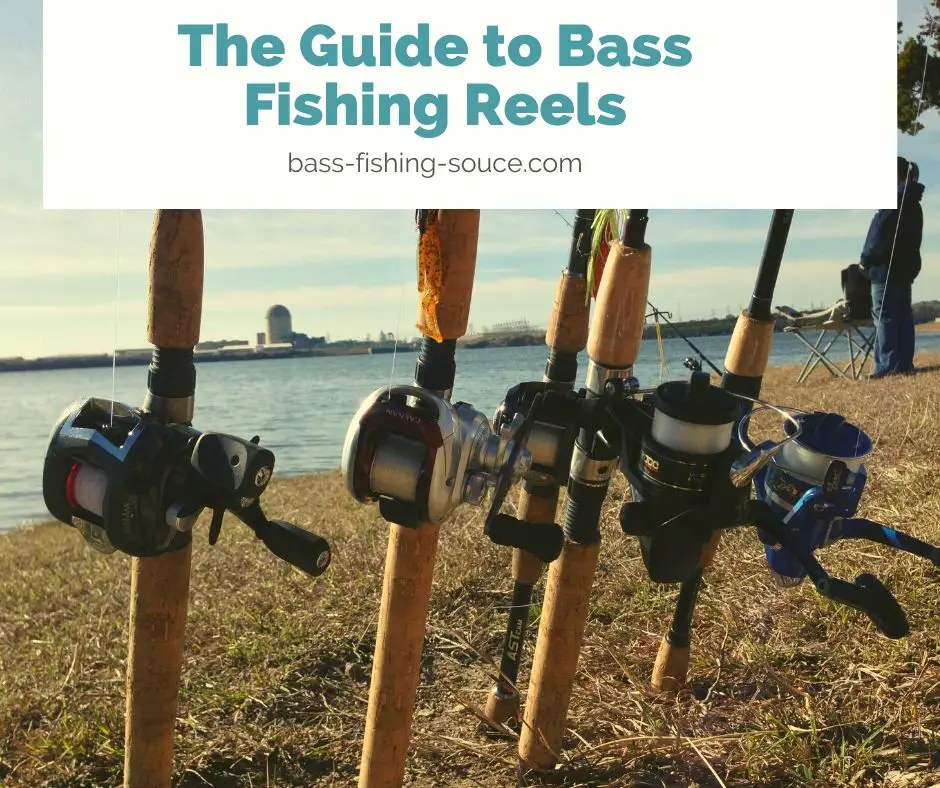
Skip To:
But before we do that, let's take a look at what each one has in common. This is a good place to start and make sure you understand what each bass fishing reel's features are and what they mean to the performance and operation of the reel.
Bass Fishing Reel Features
- Line Capacity - Every bass fishing reel has a specified line capacity. This line capacity is usually in reference to the amount of monofilament line a reel can take unless otherwise specified. While you can go outside the capacity stated on the reel you may affect performance if you do so.
- Drag - Drag is the resistance that is put on the line when fighting a hooked fish. This can be adjusted for best performance and can enable you to catch a fish that is heavier than the breaking strength of the line. Setting the drag can get real technical or you can just “feel it out” which is what I do.
- Gear Ratio - The gear ratio is specified in a number format that indicates how many turns of the handle it takes to rotate the spool. For example, a 7.1:1 gear ratio indicates that the spool will turn 7.1 times to one full turn of the handle. This being the case, higher gear ratio means a faster retrieve. This could also equal less work because you don't have to crank as much.
- Bearings - All reels have bearings. The common thought is the more, the better but as this article at online fisherman points out, that’s not always the case and what you should look for is quality over quantity when it comes to ball bearings.
The other big thing you need to take into consideration is the rod. This is where it may be easier to look for a rod and reel combo using the info on this page to select the reel. But if you want to buy a separate rod, a good overall fit for the reels mentioned here would be a 6 ½ - 7 ½ Medium to Medium/Heavy rod. I like them to be Fast action rather than Slow. This would be a good starting point.
Reel specific features - There are certain features that are unique to some of the reels.
- Anti-Reverse is a feature in most spinning reels that keeps you from cranking the reel in reverse.
- Braking systems are a feature in baitcast reels which allow you slow the line down during the cast to help you control the spool so that you lessen your chance of a backlash.
- A tension knob is another feature of a baitcast reel that adjusts the tension on the spool. This is another tool to adjust the sensitivity of the cast of a baitcaster.
Spinning Reels for Bass Fishing
The simplicity of the spinning reel is almost reason enough to make it the best choice as a bass fishing reel. I mean its probably the most used reel in all of fishing. But does that mean its the best reel for bass fishing?
There are certainly some advantages to using a spinning reel. But there are also some limitations that you need to know about before you make this your choice for the best bass reel.
Advantages of spinning reels for bass fishing
The biggest advantage to a spinning reel is the fact that they are easier to use than a baitcaster. Hold the line against the rod with your finger, flip the bail open and cast. This reel is usually less prone to line problems like backlash.
Another advantage is casting distance. You can cast a mile...well, ok maybe not a mile but you can really get your line out there and it casts really smoothly. The spinning reel is especially popular with those that like to still fish with dead or live bait. It is also the choice outfit for bank fishing, especially when trying to get bait further out or when conditions are too windy for a baitcaster.
Disadvantages of spinning reels
There are only a couple of disadvantages to this bass fishing reel. For starters your line is completely exposed to the elements. While this won't make an impact immediately, over time your line will be completely open to dirt, grime sun and other conditions that will shorten its life. Also, they are limited in the size of line you can use. The larger the diameter of the line can sometimes mean a larger and eventually cumbersome reel, so check those line capacities.
Spinning reels are limited to lower gear ratios also. Making it more difficult for techniques that require fast action.
A bigger disadvantage is its a little harder to put your lure right on a specific target. I mean you can cast to a spot with no problem but if you're trying to hit a specific spot the size of your lure, there is a better option out there than a spinning reel.
When to use a spinning reel
When it comes to using spinning reels for bass fishing, they can be used for just about any technique/lure combination you can think of. Don’t let anyone tell you differently. With that said, those more “advanced” or pro anglers will tend to keep spinning reels for a specific style of fishing like the dropshot and pretty much any type of finesse fishing. The fact that spinning reels are usually used with lighter line makes it perfect for these slower fishing techniques that also don't require constant reeling or fast retrieval.
Another specific technique involves skipping your lures. This is most often used to get under docks and other overhanging structure. It takes some practice but you can go where no other reel can go in these situations with a spinning reel.
Spinning reel sizes
You’ll see spinning reels come in different models based on their size. These are shown in terms of 2 or 4 digit numbers, like Kastking Centron 3000 or Pflueger President 30 series.. This will point to what line its rated for which also affects the overall size of the reel. The higher the number the bigger the reel.
The best spinning reel for bass fishing is going to be one that holds between 4-12 pound test line. These are going to be your 30-50 (3000-5000) series reels.
Here is the spinning reel I use the most. I actually have a few of them.
Back to top.
Bait Casting Reel
The next most common bass fishing reel and the one used by more experienced bass anglers is the baitcast reel. With a few ways of fine tuning this reel it makes it a very versatile tool for catching any kind of fish for most any technique you can think of. This is the reel that you will see most serious bass anglers using.
Advantages of baitcast reels
Most beginners find this bass fishing reel a little more difficult to learn how to use but it offers the most advantages in the way of accuracy and strength. There are a few settings that you need to adjust based on your fishing situation but once you get these things down, the bait cast reel is the best option in most situations.
Why is this the case? Well as mentioned, the ability to fine tune lets you use this reel in many different situations and customize it to your skill level. Another advantage is the ability to use a variety of lines in a variety of sizes and strengths. With no change in reel size you can go from 12 pound test to 25 pound test on the same reel.
Disadvantages of baitcast reels
Basically your only disadvantage with this reel is learning to use it. The most common problem for the inexperienced user is the dreaded backlash. Learn the proper way to adjust the tension knob and braking system. With a properly adjusted baitcaster you lessen the chance of the dreaded backlash these reels are known for. The only other disadvantage would be the price. While there are some affordable options that you can get started with, once you are ready to upgrade you can easily spend a couple hundred dollars on a good baitcast reel for bass fishing.
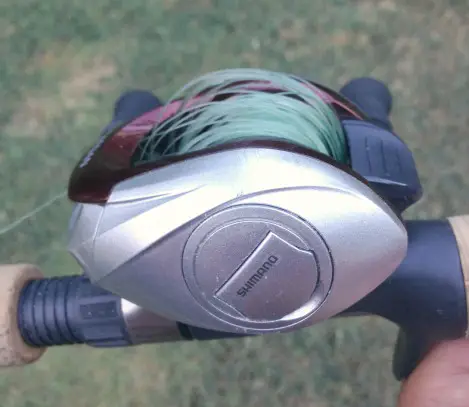
When to use baitcast reels for bass fishing
You can use this bass fishing reel for pretty much any technique you can think of but they excel at power fishing which involves constant casting and retrieval, turning and burning. They come in different speeds so that you can match with specific techniques like burning a crankbait through the water or slowing down to keep a spinnerbait in the strike zone.
Flipping and Pitching are two other very specific techniques that are exclusive to baitcast reels. Well at least these techniques are a lot easier if you have a baitcaster. Both involve casting a short distance to a chosen target.
For example, spotting bass during the spawn on a bed. You want to be able to put that lure in an exact spot to give yourself the best chance. Or you're trying to get between some fallen timber or tossing to an open pocket in a patch of vegetation. That's where a baitcaster would be your best option.
There are actually 2 different baitcasters that I use that work well and are not outrageously expensive. The Abu Garcia Revo and the Shimano Caenan which looks like its no longer available but here is a comparable one.
Back to top.
Spin Cast Reel
This is your basic bass fishing reel that most will be familiar with. There's a good chance that you fished with this type of reel when you first started out as a kid. This push button reel is probably the easiest to learn to use and manage which makes it ideal for beginners. Now this is not to say that you can’t use this as your primary fishing setup. There are plenty of people who just prefer spin casters and that is perfectly fine. Whatever works for you and is comfortable to use, then use it.
The spin caster works by pressing and holding the button to disengage the line from the spool and then releasing the button as you bring the rod forward for your cast. Once your line lands, you lock the reel by moving the reel handle until you hear a click. Reel in as normal with the handle whenever you are ready.
This is a spincast reel that me and the family have used the most.
Back to top.
Now that you know about bass fishing reels make sure you check out the rest of our info on other fishing tackle and gear including rods on our Bass Fishing Tackle page.
Return from Bass Fishing Reels to the Bass Fishing Source home page.
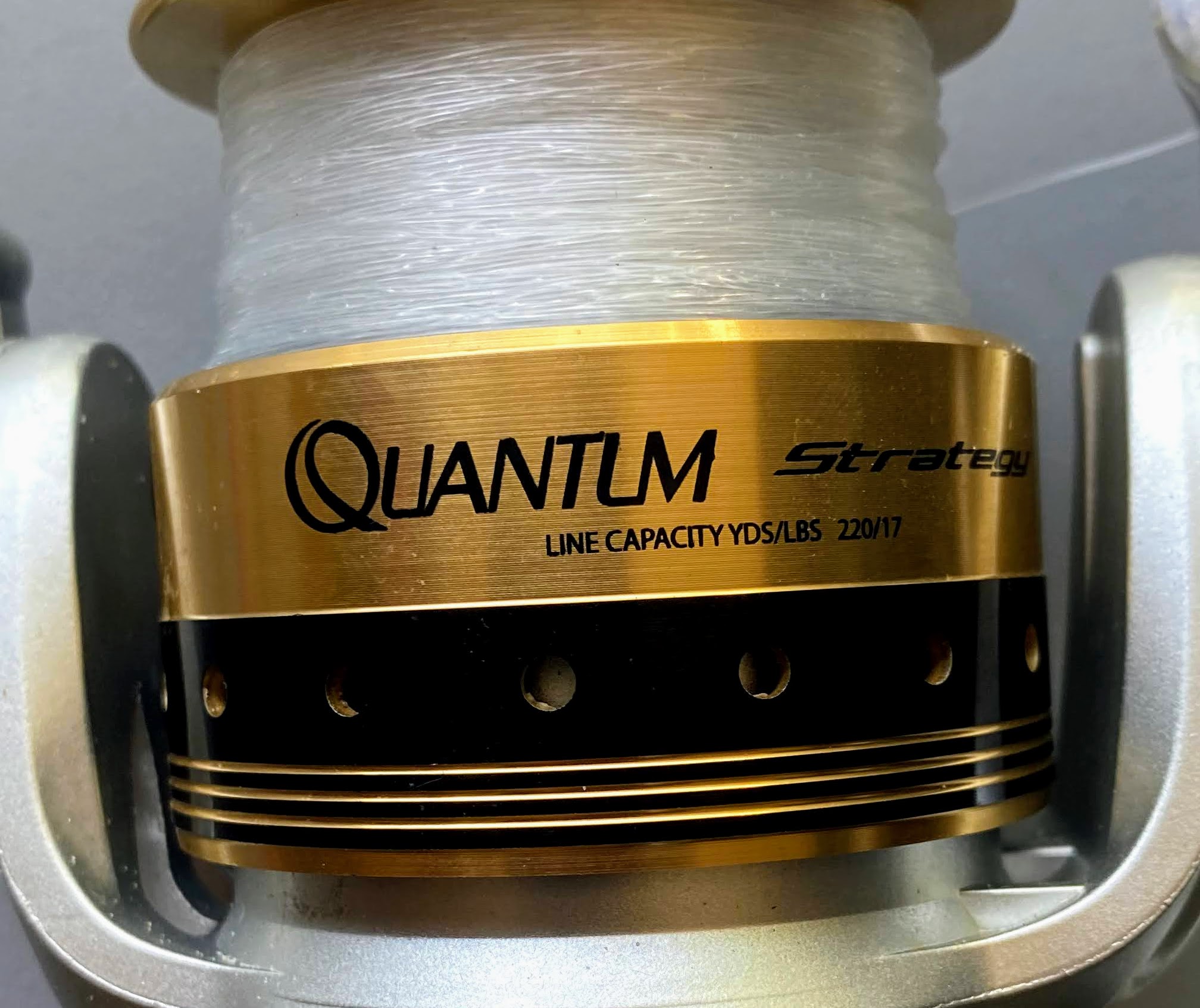
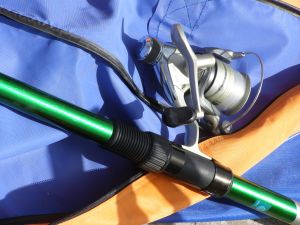
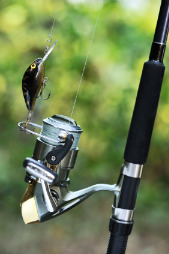
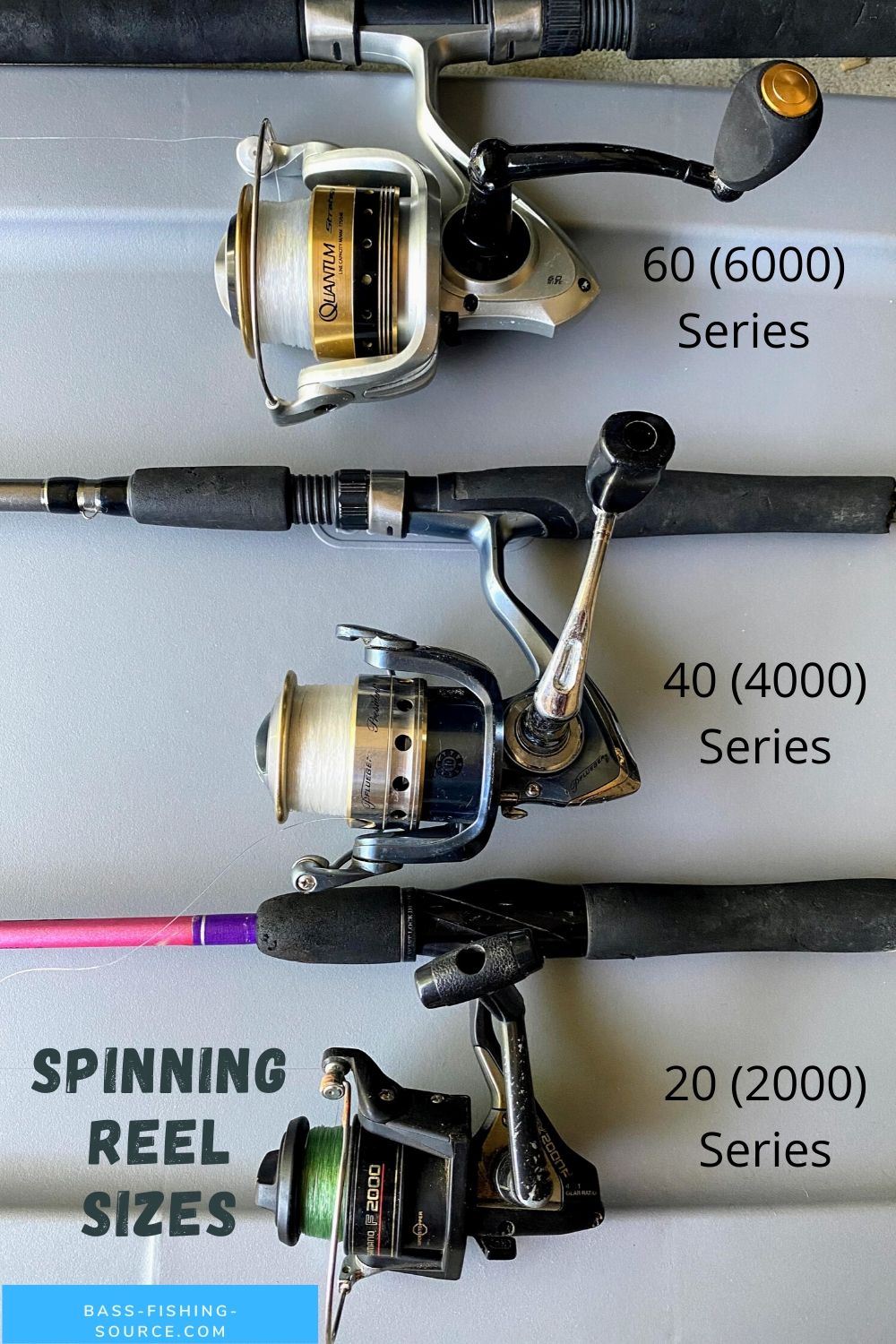
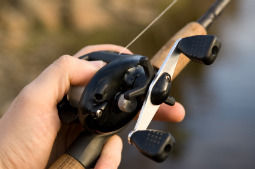
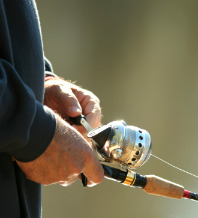
New! Comments
Let us know what you think! Leave us a comment in the box below.